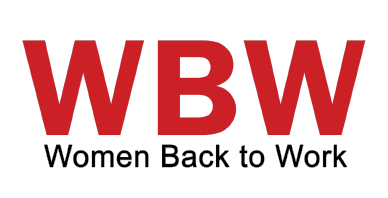Returnships Can Help Companies Improve Workplace Diversity
It’s no longer a secret that a diverse workforce is a competitive advantage. Multiple studies have shown that diversity results in more creative solutions to problems, increased sales and higher revenue, a better ability to attract and retain talent, and a better brand image. A diverse workforce is a must if you want to compete. And Returnship programs are a proven way to increase employee diversity.
Across all diversity categories, Returners struggle to find their way back into the workforce despite the fact that many of them are career professionals with impressive work experience and accomplishments. It’s that gap in their resume that most recruiting processes flag as a warning signal and often puts them out of the running for a role. It’s unfortunate because we have found that the gap is in the resume and not in the talent.
What does this all mean?
The result of this unfortunate situation is an untapped, highly diverse talent pool that most companies can, with the right approach, access, and hire from to help with diversity goals.
What diverse categories can a Returnship program help with?
Socioeconomic
Socioeconomic status refers to the interaction of economic and social factors related to an individual and their influence over each other. For example, income often influences a person’s ability to access education which in turn influences level of employment. Having employees from varying socioeconomic backgrounds provides greater insight into a wider range of the population which are often your customers.
(Read: A Comprehensive Guide to Implementing a Successful Returnship Program)
Gender
The goal of gender diversity within the workplace is to provide equal access to opportunities, resources, and rewards, especially when it comes to women. The result of having a gender diverse workplace is a better company reputation and more creative solutions due to the unique life experiences of men and women.
Race
Racial diversity can be one of the most challenging to address if your organization is located in a racially homogenous area of the country. But just like other forms of diversity, employees of different races bring unique and valuable insights that are critical to creativity, problem-solving, product development, and more.
Culture
Cultural diversity is another area that can be challenging to address but is critical to the success of any organization. Culture is defined as the characteristics and knowledge of a particular group of people, encompassing language, religion, cuisine, social habits, music, and arts. The importance of a culturally diverse workforce, especially in the US, becomes obvious when we consider that a deep understanding of your customers’ needs is critical to being able to provide products and services they want.
Age
Diversity of age is currently the most overlooked of all diversity categories. But it shouldn’t be. When we consider the unique life experiences of older individuals when compared to younger ones, it is easy to see the value both bring to the workforce. A balance of age groups with a culture that allows for open and respected communication results in better outcomes to business challenges across an organization.
Conclusion
A properly structured returnship program will tap into all of these diversity categories and have a major impact on diversity goals. This is accomplished by sourcing, screening, and hiring experienced professionals who have taken a career break and are typically overlooked within traditional recruiting processes.
